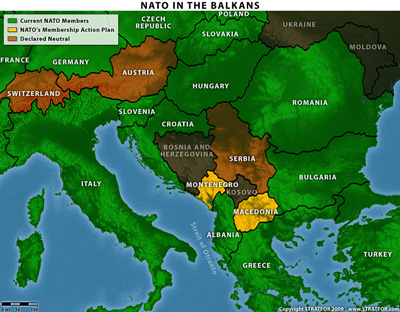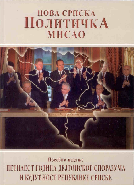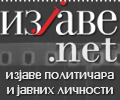| NSPM in English | |||
Montenegro's Membership in NATO and Serbia's Position |
 |
 |
 |
| понедељак, 07. децембар 2009. | |
|
Montenegro’s entry into MAP is not altogether surprising. The small Adriatic country of just under 700,000 people effectively joined the Western security alliance when its longtime leader Milo Djukanovic split from his former political mentor, Serbian strongman Slobodan Milosevic, in 1997. Montenegro won its independence from Serbia officially in a 2006 referendum, which made official what had been for almost 10 years a de facto separation. For NATO, Montenegro is not strategically important today other than as the last plug on Serbia’s access to the Adriatic Sea. It does sit on the Straits of Otranto, which allow access to the Adriatic, but the other countries abutting the Adriatic are members of NATO. Montenegro is most famous for maintaining its independence from the Ottoman Empire — independence that stemmed as much from its ability to resist the Ottomans as for Istanbul’s indifference to conquering what is essentially the cul-de-sac of the Balkans. The only country in the region that considers Montenegro strategic is Serbia, since the port of Bar — which the Serbian government is trying to purchase — is Belgrade’s only link to sea lanes since the collapse of Yugoslavia.
With Montenegro’s entry into NATO, relations between Serbia and Montenegro are not expected to worsen. Montenegrins think of themselves as “original Serbs,” so ethnic relations are good, if somewhat tense due to the 2006 separation. Since the split with Serbia, Montenegro has strived to join the elite club of European micronations (most of which are exceedingly rich) and has toyed with the idea of staying out of the European Union and becoming a playground of the rich and famous. As such, it has drifted apart from its neighbor Serbia, which, due to internal political debates, has declared itself neutral and has the policy of not striving to join NATO. However, with Montenegro officially in NATO, Serbia will be completely surrounded by the West’s military alliance. This is what makes Miletic’s comments about the Serbian army interesting. The publicly pro-EU government of Serbian President Boris Tadic has worked recently on establishing strong strategic partnerships with Russia and even China. While these may appear to be sincere attempts by Belgrade to fashion a multipronged foreign policy that is independent — and perhaps in opposition — to the West, the government may be using the policy mainly for internal consumption. The Serbian public is split between pro-EU and hardened nationalist parties. The nationalists are against NATO membership — as is the majority of Serbia’s population, due to fresh memories of the 1999 NATO air war against Serbia — and are quick to use any NATO-friendly moves Tadic makes as a way to undermine him politically. However, the Serbian military has in recent years established good relations with the West and the United States, in particular — especially the Ohio National Guard, with which it often trains. A number of Serbian officers receive training in U.S. military academies. Furthermore, Miletic’s statement that the army would become professional, a necessary step prior to becoming a NATO member, seems to be an indication that Serbia wants to move toward NATO membership. Switching to a professional army is very expensive, and it is unlikely that cash-strapped Belgrade would do it without a strategic goal in mind. Ultimately, all the talk from Belgrade of strategic partnerships with Moscow and Beijing has to be taken with a grain of salt. Serbia is isolated and surrounded by EU and NATO member states. It remembers the fact that Russia abandoned it in the 1990s during ethnic wars in the region, including the confrontation with NATO in 1999. However, Tadic is constrained domestically on moving closer to the West and geopolitically by the European Union’s continued stalling on giving Belgrade a clear path to membership. Tadic, however, may be simply playing a game of non-alignment for internal consumption. After all, Montenegro’s acceptance into NATO will only make this isolation more stark and Serbia’s choice between integration into the West’s security structures or complete isolation more clear. |
Од истог аутора
- The Nabucco West Project Comes to an End
- Remaking the Eurozone in a German Image
- Serbia: A Weimar Republic?
- NATO's Lack of a Strategic Concept
- Surveying Turkish Influence in the Western Balkans
- The Geopolitics of Turkey: Searching for More
- Kosovo – Consequences of the ICJ Opinion
- Kyrgyzstan and the Russian Resurgence
- Russia, Belarus, Kazakhstan: A Customs Deal and a Way Forward for Moscow
- ЕУ: Убрзано ширење на Балкан
- The Return of Germany
Остали чланци у рубрици
- Playing With Fire in Ukraine
- Kosovo as a res extra commercium and the alchemy of colonization
- The Balkans XX years after NATO aggression: the case of the Republic of Srpska – past, present and future
- Из архиве - Remarks Before the Foreign Affairs Committee of the European Parliament
- Dysfunction in the Balkans - Can the Post-Yugoslav Settlement Survive?
- Serbia’s latest would-be savior is a modernizer, a strongman - or both
- Why the Ukraine Crisis Is the West’s Fault
- The Ghosts of World War I Circle over Ukraine
- Nato's action plan in Ukraine is right out of Dr Strangelove
- Why Yanukovych Said No to Europe

.jpg)
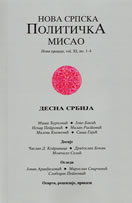
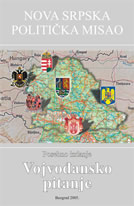


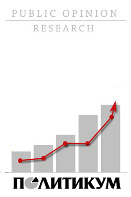
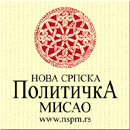


 During a meeting in Brussels, NATO foreign ministers decided Dec. 4 to give Montenegro a roadmap for membership. The Membership Action Plan (MAP) is the last step before a country joins the alliance The day before the NATO announcement on Montenegro, Serbian Army Chief of General Staff Lt. Gen. Miloje Miletic said the Serbian army would strive to become fully professional — thus supposedly ending its conscription-based service — by 2011 and would train its officers according to NATO standards.
During a meeting in Brussels, NATO foreign ministers decided Dec. 4 to give Montenegro a roadmap for membership. The Membership Action Plan (MAP) is the last step before a country joins the alliance The day before the NATO announcement on Montenegro, Serbian Army Chief of General Staff Lt. Gen. Miloje Miletic said the Serbian army would strive to become fully professional — thus supposedly ending its conscription-based service — by 2011 and would train its officers according to NATO standards.